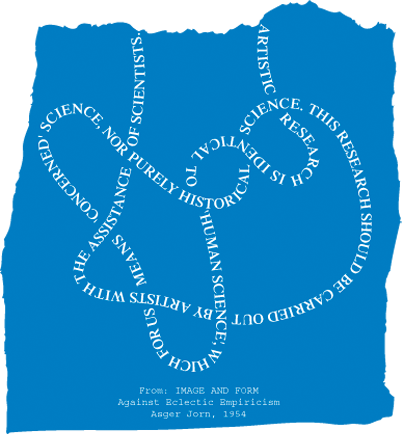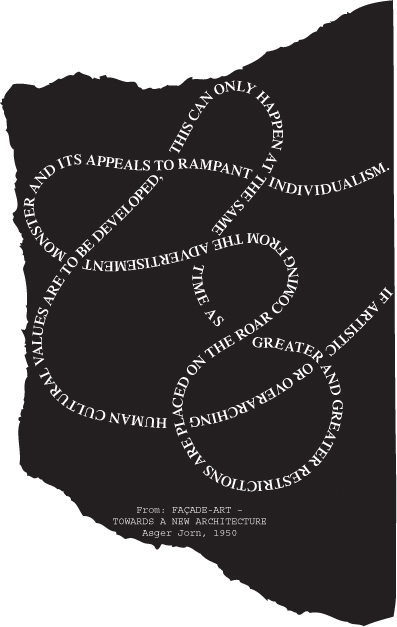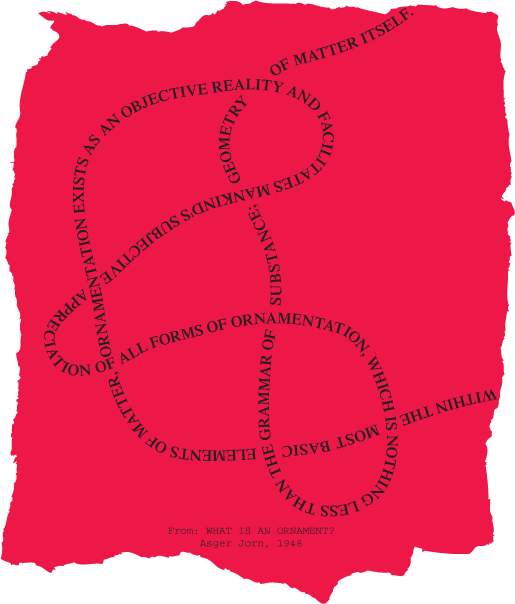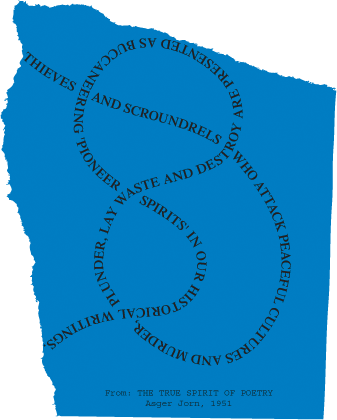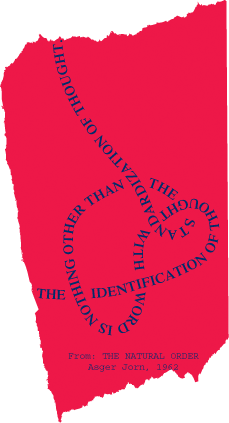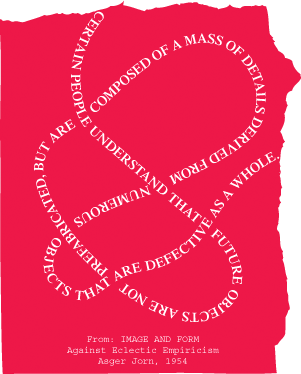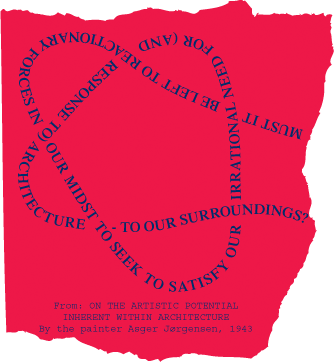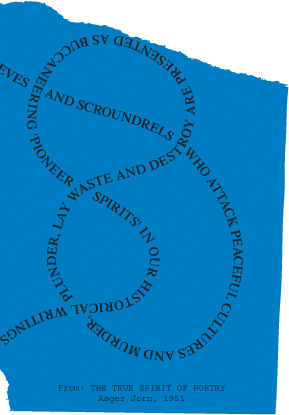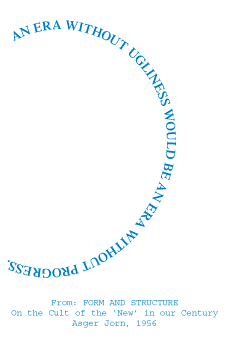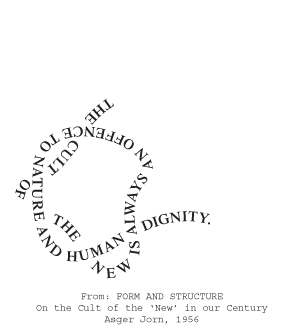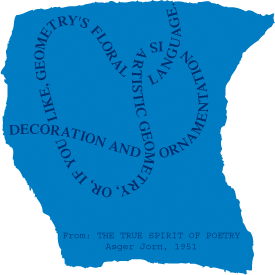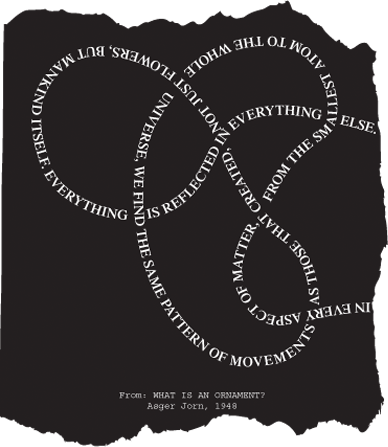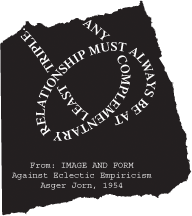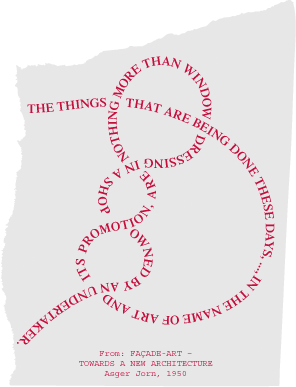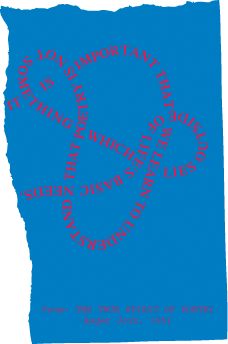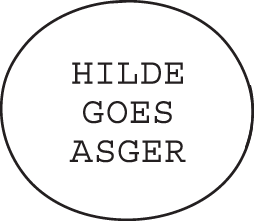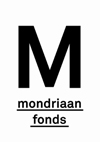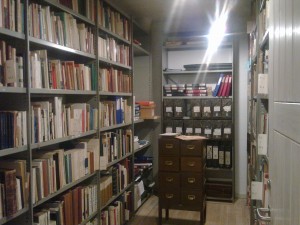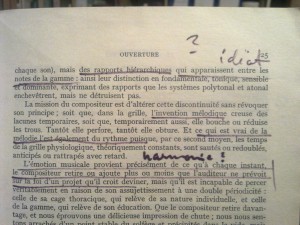JORN AND THE PRESENT
“The artistic impuls is the central locus of our imagination and intuition. It is this which unites our realities with our potential; the existential with that which does not exist; the thing that was but is no longer; that which is to come but has not yet arrived; the possible with the impossible. It is the thing which enables us, as it were, to lift ourselves above questions of time and place. This is something existentially fundamental in our nature, because it strengthens our will to live and create.” Asger Jorn, ‘On the Artistic Potential Inherent in Architecture’, 1943.
Asger Jorn (3 March 1914–1 May 1973) was born Asger Oluf Jørgensen in Vejrum, in the northwest corner of Jutland, Denmark. He was a painter, sculptor, ceramic artist, and author/thinker, and is well-known for being a founding member of the avant-garde movement Cobra and the Situationist International. What I wasn’t aware of, is that throughout his career Jorn wrote over 700 articles and books in which, or through which, he attempted no less then to undertake ‘the first revision of the existing philosophical system’. Jorn himself read a lot, and by the time of his death he possessed a considerable amount of books, of which around 1600 are archived in a modest-sized room in the Museum Jorn in Silkeborg.
In March 2012 I had the opportunity to walk into that room, which felt a little bit like walking into Jorn’s head, and I spent a great couple of hours browsing through books on aesthetics/art theory, philosophy, mathematics, structuralism, religion, folks art, medieval art, archeology and more.
Jorn regularly underlined passages, and seemed engaged in an intense (internal) dialogue with some authors. While reading Claude Levi-Strauss’s structuralist theories in the book Le Cru et le cuit (1964), he must have particularly wound himself up, and I had a great laugh taking this picture:
It was in the Summer of 2011 that I became more aware of the extend of Jorn’s philosophical output. More or less simultaneously I came across a text on Jorn’s Nordic Institute of Comparative Vandalism, and a compilation of his texts on art and architecture, recently published by 010 Publishers, Rotterdam (Fraternité Avant-Tout, Ed. Ruth Baumeister). Here, Baumeister lists a few of Jorn’s interests and undertakings, ranging from “a reinterpretation of Marxism as a cultural-political theory, critiquing the concept of unitary urbanism, advocating an immediate life experience based on human life and passion instead of capitalist order, safety and comfort, and the dominance of the image in mass media…” . What struck me most reading those texts is the organic way Jorn dealt with everything, and how he eventually integrated his thinking in an all-encompassing theory on art and life, based on a very outspoken position in the philosophical debate about the position of the artist in society. His various attempts to co-operate across boundaries of culture and thought in order to expand our field of visual knowledge are fascinating, and believe it might very inspirational to revisit some of these projects.
There have been a few issues in particular that I have been especially interested in from the outset. For instance, I am already thinking for a while about a project in which the notion of decoration and the ornament (so heavily influenced by classic modernist, functionalist ideas) would be revisited. Could Jorn’s description of “the tragic history of the ornament in art” and “the economy of ornamentation” (where he proposes a link between economic and artistic crises) be informative in that? What could we say about the status of the ornament in a time where populist politics is on the rise, and we clearly did leave it “to the reactionary forces in our midst to respond to our irrational needs …” (Jorn)? And how do his ideas on vandalism as a potential creative force, and the clear distinction he made between the subjective and the personal built a starting point for any kind of creative thinking and making in current artistic and discursive practices? How can we contextualize his ideas on history and history making to the current interest in revisiting modernist practices? This blog is a platform for exchange and dialogue between professionals from various disciplines, on these and other questions, and will hopefully lead to more in-depth analysis and creative responses throughout the coming period.
